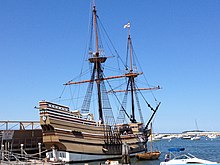 |
| 1921 Czechoslovakian Census page - Ungvar/Uzhhorod |
BSO alert! (Bright shiny object--something that attracts attention but might ultimately be a distraction.)
My maternal grandpa Theodore "Teddy"
Schwartz (1887-1965) was born in the bustling little market city that became known as Uzhhorod, Czechoslovakia. I'm always on the lookout for sources that will help illuminate the people and places he left behind.
Learning from Other Genealogy Bloggers
Last week, genealogy blogger
Lara Diamond wrote about a newly-available online resource: The 1921 Czechoslovakian Census, which included Transcarpathia, now in Ukraine. According to the Hungarian library's intro, the census took place on 1 November 1920 and 31 March 1921.
This was a BSO alert for me.
 |
| Great-grandpa Herman Schwartz |
Lara helpfully linked to the census, offered suggestions for how to proceed, and listed some of the column translations. In short, she gave me a head-start in diving into the census.
I didn't resist this BSO, and if you have ancestors from the same area, I encourage you to dive in, too.
By investigating this census, taken nearly 20 years after my Grandpa Teddy came to America, I hoped to find out about my great-grandfather Herman (photo at right), great-grandmother Hani, and other relatives who remained behind when Grandpa Teddy left.
Step 1: Browse Aggregation Pages
Because the census pages aren't indexed or transcribed, I needed to browse through sections, page by page, in search of my ancestors' names.
All I had to go on was that the Schwartz family lived in Ungvar/Uzhhorod. I began with the
Uzhhorod city census pages aggregating the names of homeowners and the number of people reported in each household.
After an hour of browsing pages individually, I felt my heart leap as I saw a familiar name at the top of a page of homeowners: Schwarz, Herman (see snippet of page at top of this post).
If I didn't have a cousin who was born and raised in Uzhhorod, it would have taken me longer to get to step 2--finding the detailed census pages that correspond to this homeowner. Happily, my cousin could see exactly where the Schwarz family home was located, and directed me to the detailed census pages that showed our ancestors.
Step 2: Browse Census Pages by Area

Under Uzhhorod, I navigated to the files for Szobranci, the street where my Schwarz family was enumerated in the Census. (Thanks to the Hungarian library for neatly organizing the census scans into these easy-to-navigate subfolders.)
By clicking the caret at left of that section, I could browse each homeowner page, one at a time.
On pp. 112-113, there was great-grandpa Herman Schwarz's name as the homeowner of number 45.
Step 3: Translate (Yikes)
The hardest part: translating what was on the census pages to learn more. I needed to know both the printed column headings and the handwritten census entries. I blew up images on my screen, and also printed some out on paper to use a magnifying glass.
 |
| 1921 Czech census headings translated |
For the actual translation, I had two trusty tools.
Google Translate helped me translate from Czech to English and occasionally Hungarian to English.
I also used the
Family Search Czech genealogical word list for handy reference. At right is my translation of the columns.
Now you can see the wealth of detail in this census! Including the profession of each person enumerated, both in 1921
and in July, 1914, before World War I.
I created a chart to fill in the translated answers for each person enumerated in the Schwartz household. Just in case, I kept my handwritten scribbles for extra backup as I uncovered more about my Schwartz ancestors in 1921 (and before).
Cliff-hanger: What Did I Learn?
Part 2 will explain what I learned about my Schwartz family. Sorry, no spoiler alert.
This
BSO was definitely worth investigating! I'm grateful to Lara Diamond for blogging about the 1921 Census.



























